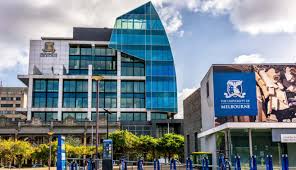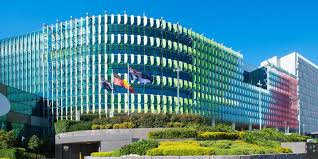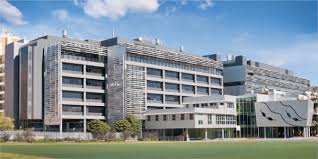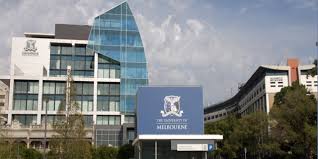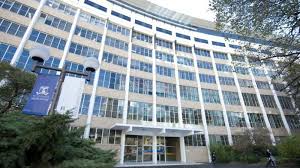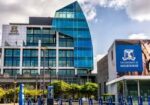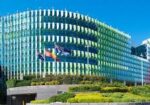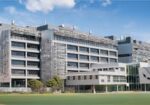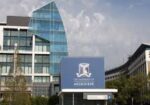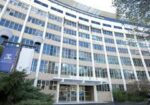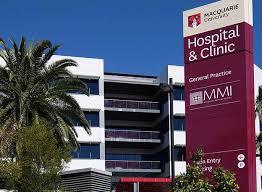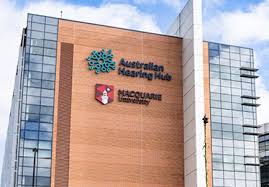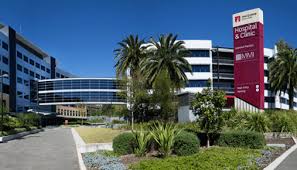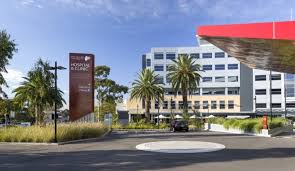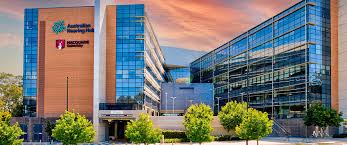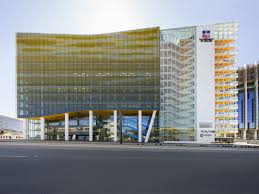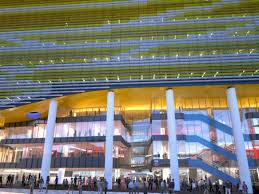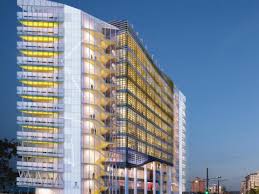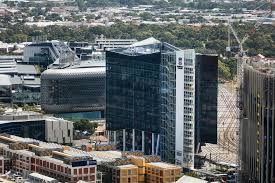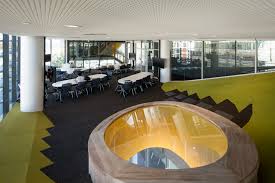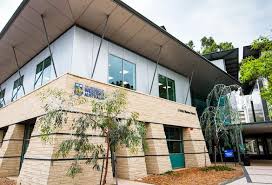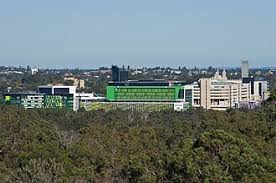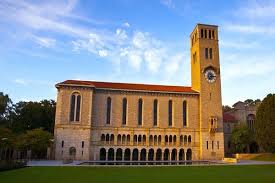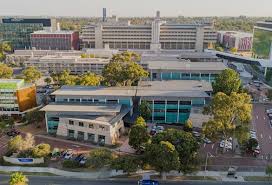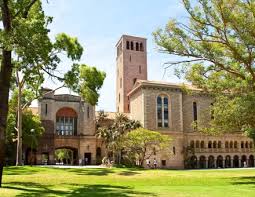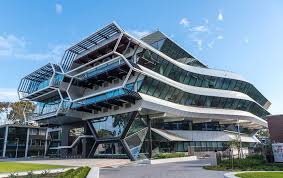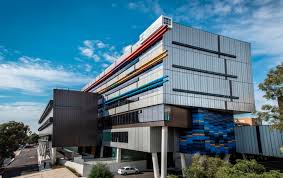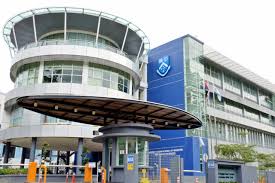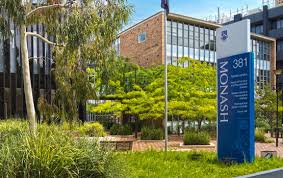University of Melbourne Faculty of Medicine, Dentistry & Health Sciences Welcome to the Faculty of Medicine, Dentistry, and Health Sciences at the University of Melbourne. For more than 150 years, College faculty has been at the forefront of advancing health and wellbeing, making significant contributions to society through education, research, and clinical practice.
About University of Melbourne Faculty of Medicine, Dentistry & Health Sciences
Faculty are dedicated to training exceptional clinicians, conducting groundbreaking research that addresses global health challenges, and graduating highly skilled professionals in medicine, dentistry, health sciences, and biomedical research. It is with great pride that I introduce you to college faculty and its remarkable achievements. The Faculty of Medicine, Dentistry, and Health Sciences is one of the most diverse and dynamic faculties at the University of Melbourne.
Comprising six schools, numerous departments, and specialized research centers, the faculty is recognized globally for its leadership in health research, policy development, and clinical practice. Universities believe that partnerships and collaborations are essential to be successful, and they take pride in their ability to work closely with industry, government, and community organizations to create meaningful impact.
University of Melbourne Faculty of Medicine, Dentistry & Health Sciences – Table of Contents
- About
- Advantages
- Ranking
- Departments And Course Duration
- Facilities And Infrastructure
- Required Documents
- Eligibility Criteria
- Admission Process
- Benefits
- Privileges And Benefits for Indian Students
- FAQ’s
University faculty is deeply embedded in Victoria’s thriving health and biomedical innovation ecosystem. Through strategic alliances with leading hospitals, research institutes, and health organizations, they amplify their ability to improve health outcomes and address pressing health challenges.
These collaborations not only enhance their research and teaching but also ensure that their work directly benefits the community. To better understand the breadth of the influence, universities invite you to explore their interactive map, which highlights the extensive network of partnerships, the scope of the collaborative projects, and the real-world impact of the research and education initiatives.
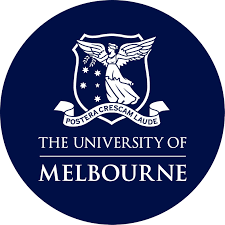
University of Melbourne Faculty of Medicine, Dentistry & Health Sciences Accreditations and Recognition
The Faculty of Medicine, Dentistry, and Health Sciences is accredited by numerous national and international bodies, ensuring that college programs meet the highest standards of quality and relevance. The medical programs are accredited by the Australian Medical Council (AMC), while the dentistry programs are recognized by the Australian Dental Council (ADC). Additionally, the health sciences and biomedical research programs are aligned with global benchmarks, ensuring the graduates are well-prepared to excel in their chosen fields.
College faculty is also home to several world-class research centers and institutes that have received prestigious accreditations and funding from organizations such as the National Health and Medical Research Council (NHMRC) and the Australian Research Council (ARC). These accolades reflect commitment to excellence and their ability to attract top talent from around the world.
The Faculty of Medicine, Dentistry, and Health Sciences is a leader in health education, research, and practice. They are proud of having a rich history, current achievements, and their ambitious vision for the future. Together with the partners, they are shaping the future of health and making a lasting impact on communities locally and globally.
Advantages of Studying at the University of Melbourne Faculty of Medicine, Dentistry & Health Sciences
- Global Reputation: Ranked among the top medical schools worldwide, ensuring high-quality education and recognition.
- Research Excellence: Strong focus on cutting-edge research with access to advanced facilities and funding.
- Interdisciplinary Learning: Integrated programs across medicine, dentistry, and health sciences for a holistic education.
- Clinical Experience: Extensive hands-on training through partnerships with leading hospitals and healthcare institutions.
- Diverse Specializations: Wide range of programs and pathways to suit various career goals.
- Innovative Curriculum: Emphasis on problem-based learning and real-world applications.
- Strong Alumni Network: Connections with successful graduates in healthcare and research worldwide.
- Supportive Environment: Comprehensive student support services, including mentoring and career guidance.
- Location: Situated in Melbourne, a vibrant city known for its healthcare innovation and cultural diversity.
Latest Notifications:
University of Melbourne Faculty of Medicine, Dentistry & Health Sciences Ranking
For nearly 150 years, they have been at the forefront of medical advancements in Australia, from the discovery of germs to the invention of the bionic ear. The School of Medicine was established in 1862, despite strong opposition and the absence of its first Professor, George Halford, who arrived a year later. Although Halford possessed outstanding credentials, he initially faced inadequate conditions and a small number of students. Remarkably, he conducted the first dissection in the back shed of his Carlton home in 1863. From these modest beginnings, the institution had evolved into the Faculty of Medicine by the time of Federation in 1901, significantly influencing health and medicine in Victoria. During this period, it also trained numerous medical professionals from Western Australia, Queensland, and Tasmania.
Throughout the twentieth century, the Medical School not only educated the nation’s doctors but also played a key role in Australian intellectual and public life. Its foundation coincided with the biomedical revolution in Western medicine, allowing it to contribute substantially to innovations and research in both laboratories and clinical settings.
In 1989, the Faculty expanded into other health sciences when the Faculty of Dental Science merged with Medicine, forming the Faculty of Medicine and Dentistry. This growth continued with the addition of Physiotherapy, Psychology, and Nursing programs.
In 2001, they established Australia’s first School of Population Health, a milestone in promoting inter-collegiate study and research. The following year, the School of Rural Health was created to address the national crisis in rural healthcare. The most recent expansions include Social Work and Global Health and Psychological Sciences. Social Work was integrated from the Faculty of Arts, while the Nossal Institute for Global Health was founded to enhance the efforts of the Australian International Health Institute.
Departments And Course Duration in University of Melbourne Faculty of Medicine, Dentistry & Health Sciences
The University of Melbourne Faculty of Medicine, Dentistry & Health Sciences does not offer a traditional MBBS (Bachelor of Medicine, Bachelor of Surgery) program. Instead, it provides a Doctor of Medicine (MD) program, which is a graduate-entry medical degree.
Doctor of Medicine (MD) Program
- Course Duration: 4 years (full-time).
- Entry Requirements: A bachelor’s degree in any discipline and completion of the GAMSAT (Graduate Australian Medical School Admissions Test) or MCAT (Medical College Admission Test) for international students.
The MD program integrates teaching and research from various departments within the Faculty of Medicine, Dentistry & Health Sciences.
- Department of Medicine: Focuses on internal medicine, cardiology, infectious diseases, and more.
- Department of Surgery: Covers general surgery, orthopedics, and other surgical specialties.
- Department of Psychiatry: Provides training in mental health and psychiatric care.
- Department of Paediatrics: Focuses on child health and development.
- Department of General Practice: Emphasizes primary care and community health.
- Department of Obstetrics and Gynaecology: Specializes in women’s health and reproductive medicine.
- Department of Radiology: Teaches diagnostic imaging and interventional radiology.
- Department of Anaesthesia: Covers pain management and perioperative care.
- Department of Pathology: Focuses on disease diagnosis and laboratory medicine.
- Department of Public Health: Addresses population health, epidemiology, and health policy.
Course Structure
The MD program is divided into two main phases:
-
Pre-Clinical Phase
-
-
- Focuses on foundational medical sciences, clinical skills, and problem-based learning.
- Includes anatomy, physiology, pharmacology, and pathology.
- Early patient contact and clinical placements.
-
-
Clinical Phase
-
- Immersive clinical training in hospitals and healthcare settings.
- Rotations across various specialties (e.g., surgery, medicine, pediatrics, psychiatry).
- Emphasis on hands-on experience and professional development.
Advantages of the MD Program
- Graduate-entry pathway for students from diverse academic backgrounds.
- Strong focus on clinical skills and research.
- Partnerships with leading hospitals and healthcare institutions in Melbourne.
- Prepares students for medical practice in Australia and internationally.
Latest Updates:
Facilities And Infrastructure in University of Melbourne Faculty of Medicine, Dentistry & Health Sciences
The University of Melbourne Faculty of Medicine, Dentistry & Health Sciences offers world-class facilities and infrastructure to support students in their academic, clinical, and extracurricular pursuits.
College Infrastructure
- State-of-the-Art Learning Spaces:
- Modern lecture theaters, tutorial rooms, and simulation labs.
- Advanced Clinical Skills Labs for hands-on training in a controlled environment.
- Anatomy Labs equipped with cutting-edge technology for dissection and anatomical studies.
- Research Facilities:
- Access to world-class research centers and institutes, such as the Melbourne Medical School and the Melbourne Dental School.
- Specialized labs for biomedical research, genomics, and public health studies.
- Hospitals and Clinical Training Sites:
- Partnerships with leading hospitals, including the Royal Melbourne Hospital, Austin Health, and The Royal Children’s Hospital.
- Opportunities for clinical placements across a wide range of healthcare settings.
Technologies
- Simulation Technology: High-fidelity patient simulators for realistic clinical training.
- Digital Learning Platforms: Online resources, virtual classrooms, and e-learning tools.
- Medical Imaging and Diagnostic Tools: Access to advanced imaging technologies for teaching and research.
Hostels and Accommodations
- On-Campus Accommodation:
- Residential colleges like Ormond College, Trinity College, and Queen’s College offer housing, meals, and academic support.
- Fully furnished rooms with access to communal spaces, libraries, and recreational facilities.
- Off-Campus Accommodation:
- University-managed apartments and housing options near the campus.
- Assistance provided for finding private rentals in Melbourne.
Library
- Brownless Biomedical Library: A dedicated library for medical, dental, and health sciences students.
- Extensive collection of textbooks, journals, and online resources.
- Quiet study areas, group discussion rooms, and computer labs.
Canteen and Dining
- Multiple food outlets and cafes on campus, offering a variety of cuisines.
- Healthy meal options and catering to dietary requirements.
- Common areas for socializing and relaxing between classes.
Sports and Recreation
- Sports Facilities:
- Melbourne University Sports Centre: Gym, swimming pool, and fitness classes.
- Outdoor sports fields, tennis courts, and indoor courts for basketball, badminton, and more.
- Clubs and Societies:
- Over 200 student-run clubs, including sports teams, cultural groups, and special interest societies.
- Medical and health sciences-specific clubs for networking and professional development.
Extracurricular Activities
- Student Organizations:
- Melbourne University Medical Society (MUMS): Organizes academic, social, and professional events.
- Global Health Society: Focuses on international health issues and volunteer opportunities.
- Volunteering and Community Engagement:
- Opportunities to participate in community health programs and outreach initiatives.
- Global health electives and international placements.
- Cultural and Arts Activities:
- Access to theaters, music rooms, and art spaces on campus.
- Regular cultural events, performances, and exhibitions.
Additional Amenities
- Student Support Services: Academic advising, counseling, and career guidance.
- Health and Wellbeing Services: On-campus medical clinic and mental health support.
- Transport and Accessibility: Convenient public transport options and bike-friendly campus.
The University of Melbourne provides a comprehensive and supportive environment for students in the Faculty of Medicine, Dentistry & Health Sciences, ensuring a well-rounded academic and personal experience.
Official site For University of Melbourne Faculty of Medicine, Dentistry & Health Sciences: Click Here
Required Documents for Admission in University of Melbourne Faculty of Medicine, Dentistry & Health Sciences
- Copy of 10th Certificate & mark sheets
- Copy of 12th Certificate & mark sheets
- Copy of Bachelor degree certificate (If applicable)
- Leaving Certificate
- Birth Certificate
- UCAT scorecard
- Personal statement
- Bank Statement
- Copy of passports
- Passport-size photographs
Eligibility Criteria for the Doctor of Medicine (MD) program at the University of Melbourne Faculty of Medicine, Dentistry & Health Sciences
1. Academic Requirements
- Bachelor’s Degree: Completion of an undergraduate degree in any discipline (minimum 3 years full-time).
- GPA: Competitive Grade Point Average (GPA) in your undergraduate studies.
2. Entrance Exams
- GAMSAT: Graduate Australian Medical School Admissions Test (required for domestic and some international students).
- MCAT: Medical College Admission Test (for international students from certain countries, e.g., the USA or Canada).
3. English Language Proficiency
- IELTS: Minimum score of 7.0 (with no band less than 7.0).
- TOEFL: Minimum score of 94 (with specific minimums in each section).
- Other accepted tests include PTE and CAE.
4. Interview
- Multi-Mini Interview (MMI): Shortlisted candidates are invited to attend an interview to assess communication, ethical reasoning, and problem-solving skills.
5. Additional Requirements
- Prerequisite Subjects: Some background in anatomy, physiology, or biochemistry may be required (varies by applicant).
- Work Experience: Not mandatory but recommended (e.g., healthcare-related experience).
Key Points for International Students
- Check country-specific requirements.
- Ensure your qualifications are recognized by the University of Melbourne.
Admission Process For University of Melbourne Faculty of Medicine, Dentistry & Health Sciences
- Application form and Visa invitation form
- Academic certificates
- Medical certificates (with vaccination reports)
- Health insurance
- Valid Passport with a minimum validity of 2.5 years
- Student visa
- Photo 3.5 x 4.5 cm
- HIV certificates
- Covid-19 certificates
Get More Details About The Colleges in Australia: Click Here
Benefits of Studying in University of Melbourne Faculty of Medicine, Dentistry & Health Sciences
1. World-Class Reputation
- Ranked among the top medical schools globally.
- Recognized for excellence in education, research, and healthcare innovation.
2. Innovative Curriculum
- Graduate-entry Doctor of Medicine (MD) program designed for diverse academic backgrounds.
- Emphasis on problem-based learning and clinical skills.
3. Cutting-Edge Facilities
- Access to state-of-the-art labs, simulation centers, and research facilities.
- Partnerships with leading hospitals for hands-on clinical training.
4. Research Opportunities
- Strong focus on biomedical and clinical research.
- Opportunities to work with renowned researchers and contribute to groundbreaking studies.
5. Diverse Specializations
- Wide range of disciplines, including medicine, dentistry, public health, and biomedical sciences.
- Flexibility to pursue various career pathways.
6. Supportive Learning Environment
- Access to mentoring programs, academic advisors, and career services.
- Strong focus on student well-being and work-life balance.
7. Vibrant Campus Life
- Located in Melbourne, one of the world’s most liveable cities.
- Access to cultural events, sports facilities, and student clubs.
8. Strong Alumni Network
- Connections with a global network of successful graduates in healthcare and research.
- Opportunities for mentorship and professional growth.
9. Career Opportunities
- High employability rates with graduates working in top hospitals, research institutions, and healthcare organizations.
- Preparation for leadership roles in healthcare and academia.
Privileges And Benefits for Indian Students in University of Melbourne Faculty of Medicine, Dentistry & Health Sciences
1. Global Recognition of Degree
- The Doctor of Medicine (MD) degree is recognized internationally, including in India, enabling graduates to practice medicine globally.
- Graduates can sit for licensing exams like the FMGE (Foreign Medical Graduates Examination) in India or USMLE for the USA.
2. Scholarships and Financial Aid
- Melbourne International Undergraduate Scholarship: For high-achieving Indian students.
- Graduate Research Scholarships: For postgraduate research students.
- External scholarships like the Australia Awards and Inlaks Shivdasani Foundation grants.
3. Support for International Students
- Dedicated International Student Support Services for academic, visa, and personal assistance.
- Indian Student Association: A community for cultural connection and networking.
4. Clinical Training Opportunities
- Hands-on training in world-class hospitals and healthcare facilities.
- Exposure to advanced medical technologies and practices.
5. Pathway to Residency and Employment
- Strong support for securing internships and residencies in Australia or other countries.
- High employability rates in top healthcare institutions globally.
6. Cultural Diversity
- Melbourne is a multicultural city with a large Indian community, making it easier to adapt.
- Access to Indian festivals, food, and cultural events.
7. Research Opportunities
- Opportunities to collaborate with leading researchers in biomedical and clinical fields.
- Access to cutting-edge labs and research facilities.
8. English Language Support
- Free English language workshops and resources to improve communication skills.
- Support for meeting English proficiency requirements (e.g., IELTS, TOEFL).
9. Alumni Network
- Access to a strong global alumni network, including Indian graduates in top healthcare roles.
- Mentorship opportunities from successful Indian alumni.
10. Preparation for Indian Licensing Exams
- Curriculum aligned with global standards, helping students prepare for exams like FMGE or NEET-PG.
11. Safe and Welcoming Environment
- Melbourne is consistently ranked as one of the world’s most liveable cities.
- Safe, inclusive, and supportive environment for international students.
FAQ’s
Are there scholarships available for international students?
Yes, the university offers a variety of scholarships for international students, including:
- Melbourne International Undergraduate Scholarship.
- Graduate Research Scholarships.
- Melbourne Mobility Awards for study abroad.
- Specific scholarships for medicine, dentistry, and health sciences based on merit and need.
Is the MD program at the University of Melbourne recognized internationally?
Yes, the MD program is recognized globally, including by the Medical Council of India (MCI), General Medical Council (UK), and other major accrediting bodies.
What clinical training opportunities are available?
Students can gain clinical experience at:
- The Royal Melbourne Hospital.
- St Vincent’s Hospital.
- Austin Health.
- Rural clinical schools for diverse patient exposure.
Are there research opportunities for students?
Yes, students can engage in research through:
- Honours programs.
- Research electives.
- Affiliated research institutes like the Walter and Eliza Hall Institute.
Is there an Indian student community?
Yes, the Indian Student Association and other cultural clubs provide a supportive community.
Also Check:
